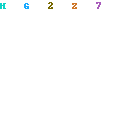Q: I went to an art opening at a gallery that was selling paintings by a recently rediscovered artist who died about 25 years ago. They have several hundred paintings by the artist and are the exclusive representatives of his estate. According to the gallery, the artist was popular in this part of the country from the late 1920's through about 1965, but his art has hardly been shown since the early 1970's. The paintings are pretty nicely done and priced in the $3,000-$15,000 range. Would you recommend that I buy one?
A: Artist estates like this one come onto the market with some regularity as artists rarely pass away without leaving behind varying quantities of unsold work. Better known artists with gallery representations often make arrangements with their galleries to continue selling their art after they die. When an artist is not that well known or does not have ongoing gallery representation, the artist's family or whomever inherits the art usually makes arrangements with one gallery or dealer to market the art to the public as the artist's exclusive representative. Far less frequently, dealers rediscover and attempt to package and market the estates of artists who worked in virtual obscurity with no previous gallery exposure. Whatever the case, if you like the art and are thinking about buying some, do a little research first.
What distinguishes artist estate situations like those mentioned above from other art selling situations is that a single dealer or gallery, not forces of supply and demand, controls an artist's market. This level of control effectively creates monopolies in the marketplace, and the greater the percentage of an artist's art that a dealer or gallery either owns or otherwise represents, the stronger the monopoly (this applies to living artists, too, by the way). Consequently, a dealer or gallery with an art monopoly can arbitrarily set and manipulate the artist's selling prices. Before you buy "art monopoly" art, as you would be doing here, you have to make sure that the prices you're being asked to pay are fair and not exorbitant.
Most artist estates are marketed fairly with the art priced reasonably, and according to what the market will bear. Occasionally, however, a gallery represents the estate of a mediocre artist as a "great discovery" and puts excessively high prices on the art. The dealer may believe the artist is truly significant; he might simply be exploiting a moneymaking opportunity. Even if he manages to convince the public for a while with heavy promotion, in the end, ordinary art sells for ordinary prices and those who overpay at his gallery will have little chance of ever recouping their initial cash outlays.
With any art monopoly, best procedure is to research the significance of the artist and the fairness of the representing dealer's asking prices on your own before making any purchases. Follow the directives below in order to make sure that you get a good piece of art for your money.
** Get biographical data about the artist's career from the gallery selling the art as well as from outside sources like artist dictionaries, encyclopedias, or who's whos. You want evidence that the artist regularly showed, sold, and was recognized for his art. He needs a pretty good track record in order to justify the $3,000- $15,000 prices that you're being asked to pay.
** Check auction records and other art price databases to see whether this artist's art sells on secondary markets and, if it does, for how much. You want evidence that the art changes hands under these circumstances for at least 30% to 50% of the representing gallery's asking prices.
** Compare the gallery's asking prices to prices for similar works of art by artists who were active in the same region during the same time period and who achieved similar amounts of recognition to the gallery's artist. As with real estate, evaluating "comps" (selling prices for similar pieces of property in the same neighborhood) is an important part of determining the fairness of an asking price. You want evidence that your property-to-property or artist-to-artist prices are approximately the same.
** If you're on good speaking terms with other art dealers, ask their opinions on this artist and his art. Favorable responses mean go ahead and buy.
Source : www.artbusiness.com

0 comments:
Post a Comment